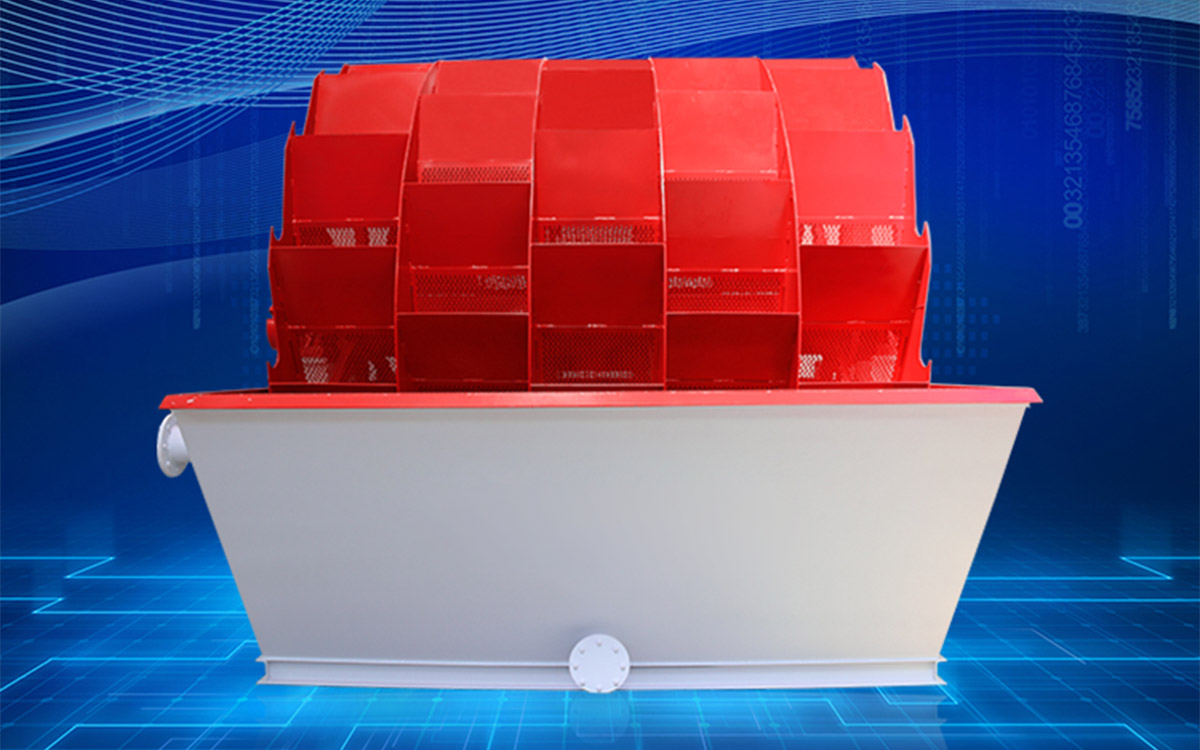
The gear is one of the main parts of the sand washing machine. There are three types of wear: 1: Adhesive wear - caused by metal-to-metal contact, the surface is bonded together and then torn off. The reason may be insufficient lubricating oil, or the gear is not Proper meshing; 2: abrasive wear—caused by foreign particles such as dust and sand; 3: corrosive wear—chemical attack on the gear surface by contaminated lubricating oil or additives.
If the gear is damaged, it will seriously affect the working condition of the sand washing machine, and then affect the working efficiency of the entire production line, and the gear damage is generally caused by the following four reasons:
1. The material selection of the gear does not meet the requirements, its strength is not enough, and the load it receives is too large, which leads to its damage.
2. The precision of gear machining and the hardness of tooth root after heat treatment did not meet the requirements.
3. During the long-term operation of the sand washing machine, the gears lack oil and are not lubricated in time, and dry wear with the internal parts of the machine, resulting in damage to the gears of the sand washing machine.
4. The maintenance of the shaft of the sand washing machine and the low-speed shaft of the reducer has not reached the balance specified in the instruction manual, resulting in damage to the gears of the machine. In severe cases, it may also cause damage to the bearings.

Stator and rotor core failure
The stator and rotor are made of silicon steel sheets insulated from each other, which are the magnetic circuit part of the motor. Once the iron core fails, the eddy current will increase, and the iron core will overheat locally, which will affect the normal operation of the motor. Stator and rotor core failures are mainly caused by the following aspects.
1. Excessive wear or poor assembly of bearings will cause the stator and rotor to rub against each other, resulting in damage to the surface of the iron core, which in turn will cause a short circuit between the silicon steel sheets, increase the iron loss of the motor, and cause the temperature rise of the motor to be too high.
2. Excessive force is used when removing the old winding, which will make the teeth crooked and open outwards, and damage the iron core.
3. The surface of the iron core is corroded due to damp and other reasons.
4. The grounding around the group produces high heat and burns the iron core or teeth.
5. The connection between the iron core and the frame is loose.
6. Due to the short circuit or grounding of the stator winding, the arc burns the iron core and damages the insulation between the silicon steel sheets, resulting in a short circuit.
7. Poor fastening and motor vibration cause the iron core to loosen.
8. Inadvertently damaged by mechanical force during overhaul.
Daily Use Safety Rules
1. The user should install protective equipment on the V-belt according to the specific conditions on the site before running it.
2. Before starting, you must check whether there is enough grease at each lubrication point, and first rotate the rotor and other components by hand to check whether the machine is abnormal.
3. After starting the motor, wait for the operation to be normal, and then start to gradually add materials.
4. If there is an abnormal response during work, stop feeding immediately. After all the materials are discharged from the discharge chute, stop the motor for inspection, and restart the machine after troubleshooting. Note: The material in the cavity must be removed before starting up, and start without load.
5. The machine should rotate in a fixed direction and not reverse rotation.
6. When the sand washing machine is running, it is not allowed to repair and clean up, and it is strictly forbidden to start the machine for maintenance.